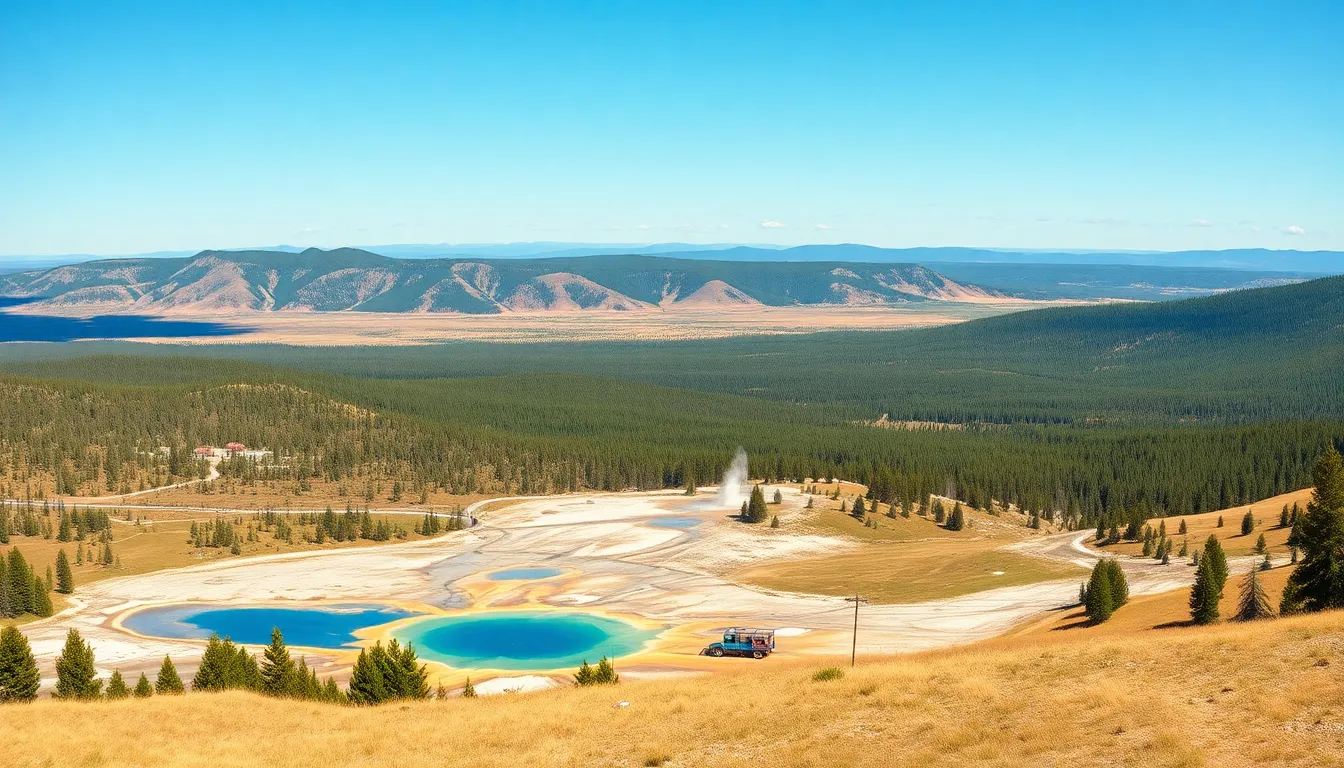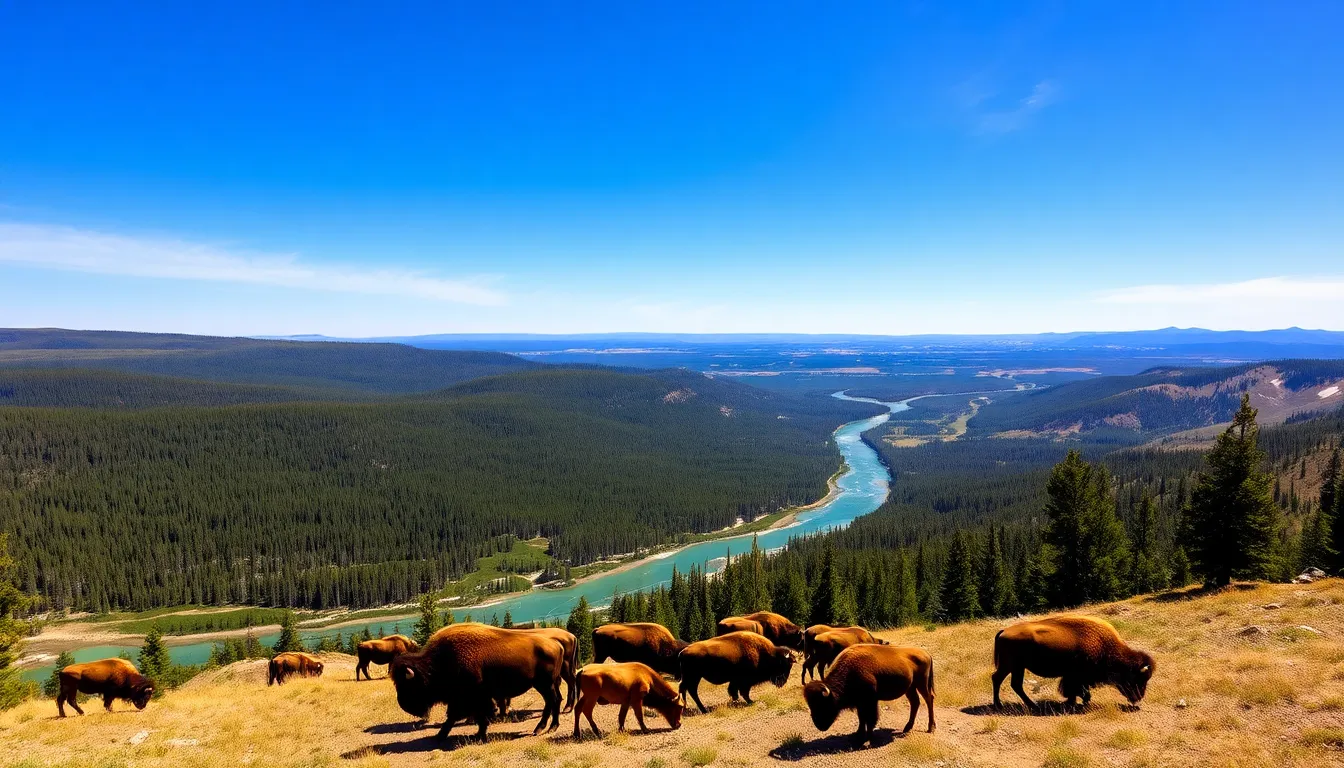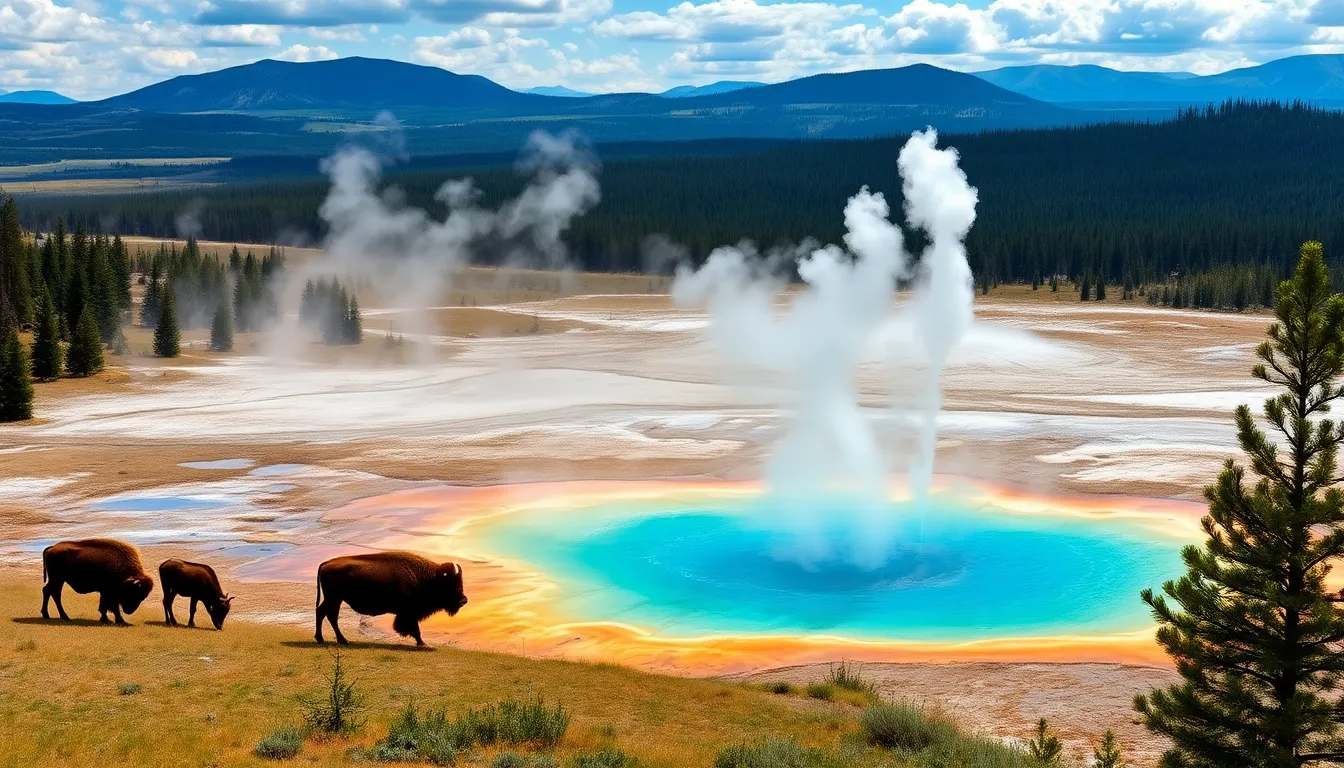Yellowstone National Park isn’t just a pretty face; it’s a sprawling wonderland that’s larger than most states. With its geysers, hot springs, and wildlife, it’s a paradise for nature lovers and adventure seekers alike. But just how big is this iconic park? Spoiler alert: it’s not a backyard barbecue size!
Table of Contents
ToggleOverview of Yellowstone National Park
Yellowstone National Park encompasses approximately 3,472 square miles, which translates to about 2.2 million acres. This vast area makes it one of the largest national parks in the United States. Entrusted with natural wonders, the park features over half of the world’s active geysers, including the famous Old Faithful. Unique geological features, including hot springs and fumaroles, further enhance its appeal.
Bison, elk, grizzly bears, and wolves thrive in this ecosystem, showcasing the park’s commitment to wildlife conservation. Visitors can explore diverse habitats, including forests, rivers, and meadows. Each ecosystem provides a habitat for different species and features distinct flora and fauna.
Established in 1872, Yellowstone stands as the first national park globally. Its rich history adds depth to the visitor experience. In addition to natural beauty, the park offers cultural landmarks, such as Native American heritage sites. This blend of history and nature makes Yellowstone a compelling destination.
Numerous recreational activities await adventurers. Hiking, camping, and wildlife viewing attract millions of visitors each year. The park’s extensive trail system covers hundreds of miles, providing access to its breathtaking landscapes.
With such an impressive size and diverse offering, Yellowstone National Park remains a premier location for outdoor enthusiasts and nature lovers alike. Each visit promises a unique experience, encouraging exploration and appreciation of America’s natural heritage.
Size of Yellowstone National Park


Yellowstone National Park covers a vast area, showcasing its grandeur. Its total size measures approximately 3,472 square miles, which converts to about 2.2 million acres.
Total Acres
The park spans 2,219,791 acres, making Yellowstone one of the largest national parks in the United States. Various ecosystems thrive within its boundaries, including forests, lakes, and geysers. The diversity of habitats contributes to the rich wildlife, supporting species like bison, elk, and bears. Visitors experience unique geological features and vibrant landscapes, all within its expansive area. Each corner of the park offers distinct natural wonders to explore.
Comparison with Other National Parks
Yellowstone ranks among the largest national parks in the country, particularly when compared to others like Yosemite and Grand Canyon. Yosemite National Park encompasses around 1,187 square miles, or 758,122 acres. Grand Canyon National Park measures approximately 1,902 square miles, translating to 1,218,375 acres. Yellowstone surpasses these parks significantly in size, highlighting its vastness and ecological diversity. The expansive area provides ample opportunities for various recreational activities, attracting millions annually. Each park, despite its size, showcases unique natural beauty and experiences that captivate visitors.
Geographic Features
Yellowstone National Park boasts diverse and captivating geographic features. Its vast expanse of 3,472 square miles includes a variety of terrains and landscapes.
Terrain and Landscape
Mountains, valleys, and geothermal areas define Yellowstone’s topography. The Absaroka Range borders the park while the Yellowstone Plateau serves as its centerpiece. Unique geological formations, such as the iconic Grand Canyon of the Yellowstone, reveal striking waterfalls and colorful rock faces. Thermal features scattered throughout the park, including hot springs and mud pots, illustrate its volcanic history. Visitors encounter lush forests, expansive meadows, and clear lakes, each contributing to the park’s natural beauty.
Wildlife and Ecosystems
Yellowstone hosts an incredible diversity of wildlife and ecosystems. Over 60 mammal species inhabit the park, including bison, elk, grizzly bears, and wolves. Riparian zones and meadows provide essential habitats for these animals. Aquatic ecosystems in Yellowstone’s lakes and rivers support numerous fish species. From subalpine forests to sagebrush steppe, various habitats flourish throughout the park, fostering unique flora and fauna. This rich biodiversity exemplifies Yellowstone’s crucial role in conservation efforts.
Historical Context
Yellowstone National Park’s establishment marks a significant moment in conservation history. In 1872, President Ulysses S. Grant signed the legislation that created the first national park in the world. This landmark decision aimed to protect the park’s extraordinary geothermal features and stunning landscapes for future generations.
Establishment of the Park
The creation of Yellowstone National Park reflected a growing national interest in preserving natural wonders. It showcased breathtaking geothermal features, including geysers and hot springs, attracting attention from botany and geology enthusiasts. Advocates such as Ferdinand V. Hayden played crucial roles in promoting the park’s creation through expeditions that documented its unique geological formations. The legislation received overwhelming support from the public and government, establishing a framework for conservation in the United States.
Changes in Size Over Time
Yellowstone’s size has remained nearly constant since its establishment, approximately 3,472 square miles or 2.2 million acres. No major land acquisitions have occurred since the original boundaries were set. In fact, discussions about expanding the park have surfaced over the years, often focusing on surrounding areas’ ecological importance. The park remains one of the largest protected areas in the U.S. It illustrates a commitment to conservation, balancing preservation needs with visitors’ recreational opportunities.
Visitor Information
Yellowstone National Park offers a wealth of experiences for all visitors. Its vast landscapes and diverse ecosystems create an environment ripe for exploration.
Recreational Opportunities
Hiking trails wind through scenic views and diverse wildlife habitats. Camping sites allow visitors to immerse themselves in the natural surroundings. Fishing opportunities exist in numerous rivers and lakes, with regulations in place to protect fish populations. Wildlife watching attracts enthusiasts hoping to spot bison, elk, and bears in their natural habitat. Photography opportunities abound, with stunning vistas at every turn. Guided tours provide insights into the park’s geological features and history, enhancing the overall experience. Each season reveals unique activities, from snowshoeing in winter to wildflower viewing in spring.
Tips for Exploring the Park
Planning ahead is essential for a successful visit. Check road conditions before arrival, as accessibility varies by season. Pack layers of clothing, as temperatures frequently change throughout the day. Bring plenty of water and snacks while exploring remote trails. Respect wildlife by observing from a safe distance and adhering to park guidelines. Utilize visitor centers for maps and exhibit information; they offer valuable insights into the park’s ecology and history. Arriving early in the day reduces crowding at popular sites, allowing for a more peaceful experience. Prepare for varying cell service, which may be limited in remote areas.











